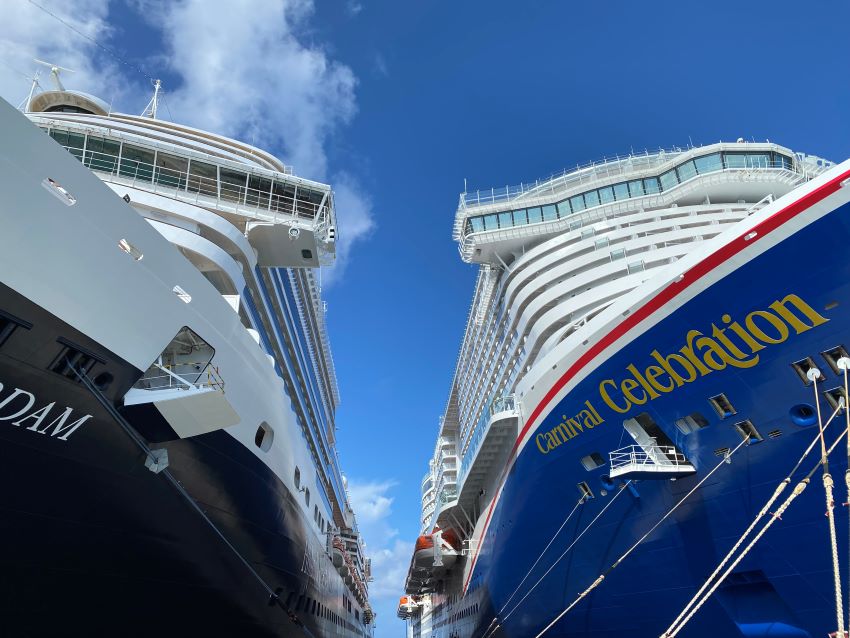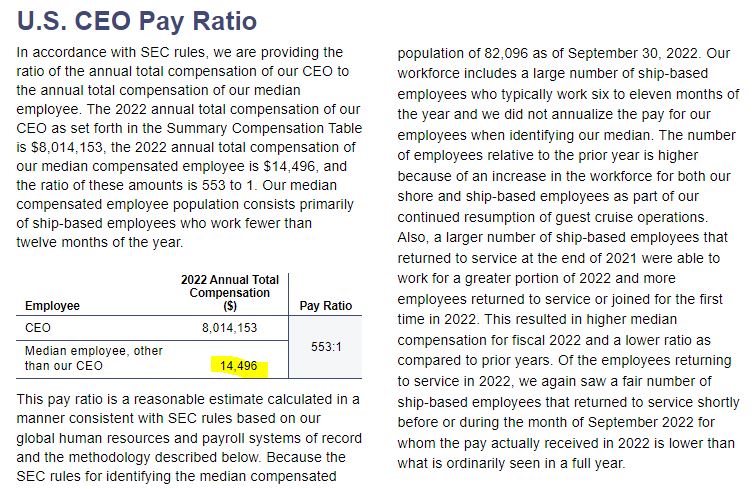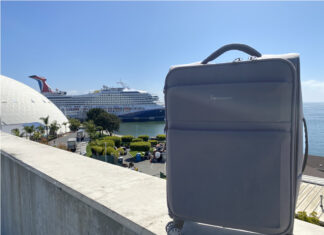If you’re like many passengers, no matter what the crew members aboard a cruise ship earn, you still might not think it’s enough. One constant in cruising is an overall appreciation for the hard work that crew do to provide passengers with a great vacation.

The crew that you encounter on the cruise — such as the cabin stewards, dining staff and more — have jobs that are unlike what many of us have ever experienced.
For one, crew members work lengthy shifts. It’s not unusual, for instance, to see your cabin steward making his or her first rounds early in the morning and then doing another round to tidy up rooms late in the evening. And this pace happens day in and day out across all sorts of positions.
Not only is the work hard, but the crew is also doing it far from home. You’ll notice that large portions of the crew are from places like the Philippines, India, and China, among many other countries. Often, they are literally from places halfway around the world while families and friends are still back home.
And that distance isn’t just a factor for a few weeks. Crew operate under contracts that last for months. That means they can often stay and work on the ships for six months at a time before returning home.
To be sure, working on a cruise ship isn’t for everyone. Yet many do it for the opportunity to earn a living making more than what they would back home while also seeing parts of the world that many others never get the chance to visit.
So exactly how much do workers on a cruise ship earn?
“Median Employee” Earning Disclosure Required
First, there is no set rate that every person working on a cruise ship earns. Different positions on the ship will make different amounts. And on a modern cruise ship there are dozens if not hundreds of different roles, from the captain of the ship to kitchen staff.
That means there is no set compensation list for every cruise line that shows what different positions make (at least publicly).
But we do have the next best thing…
Major cruise lines like Carnival, Princess, Royal Caribbean, Celebrity, and Norwegian are actually part of larger public companies that trade on major stock exchanges. As a result, the parent companies are subject to certain SEC filing requirements.
Along with quarterly and annual reports, part of that requirement is a “Pay Ratio Disclosure” as part of the Dodd-Frank reform. Here, a company must detail the ratio of pay for a company CEO compared to the “median employee.”
That gives us not only a glimpse into how much the top brass at the company makes in total, but also what those who work on the ship earn as well.
How Much the Crew Makes on a Cruise
There are three major cruise companies that trade on public exchanges: Carnival Corporation, Royal Caribbean Group, and Norwegian Cruise Line Holdings. Each shares the “median employee” wages via the CEO Pay Ratio disclosure in its filings.
Carnival Corporation includes lines like Carnival, Princess, Costa, and others. In 2022, the cruise company reported that its median employee earned $14,496 in total compensation. With a CEO total compensation of over $8 million, that comes to a pay ratio of 553:1.

Royal Caribbean Group includes names like Royal Caribbean, Celebrity, and more. In 2022, the company stated that its median employee earned $15,264. Given total compensation to the CEO of $10.7 million, the pay ratio comes in at 705:1.
Finally, Norwegian Cruise Line Holdings, which includes NCL, Oceania and Regent Seven Seas filed that its total compensation for 2022 was $24,484. Meanwhile, that company’s CEO took home compensation of more than $21 million. That is a pay ratio of 866:1.
For comparison, hotel company Hilton Worldwide Holdings reports a median employee compensation of $43,702 compared to over $23.5 million in compensation for the CEO. That’s a ratio of 539:1.
And according to the Economic Policy Institute, the average CEO-to-worker ratio reached 399:1 in 2021, a new high.
Some More Things to Know About The Crew’s Compensation
There is little argument that if you want to get rich, then working on a cruise ship likely isn’t the path. That said, there is some context with these figures that bears mentioning.
First, as mentioned, the crew are internationally sourced, often from places where the cost of living is significantly lower than what we see in the United States. That can make the earnings — though low by American standards — more attractive.
Second, this compensation figure is based on what the “median employee” was paid over the course of the year. However, many employees do not work the entire year. According to Carnival Corporation’s disclosure, “our workforce includes a large number of ship-based employees who typically work six to eleven months of the year and we did not annualize the pay for our employees when identifying our median.”
Finally, when working on the ship, cruise crew are also provided with some benefits like room and board that aren’t usually included in regular jobs. As Norwegian stated, “our shipboard employees receive certain accommodations that are not typically provided to shoreside employees including housing and meals while on the ship and medical care for any injuries or illnesses that occur while in the service of the ship. These accommodations are free of cost to each shipboard employee.”
Even with that, however, there’s no doubt that by American standards, shipboard crew work extremely hard and for wages that many of us would not be willing to take.
And while the cruise lines make clear that this compensation figure includes wages and gratuities billed to passengers, they do not include any extra money paid to crew directly by guests. So the next time you’re feeling generous on a cruise, the crew would likely be happy to accept any extra gratuity.








This is a typical crap article from cruise ship apologists. So really most people don’t get a good wage and saying maybe Americans won’t work for this, but they do. Relying on tips is a cop out. These hardworking people should be paid for every hour they work. I wouldn’t trust a metric 400-600:1! ; it’s a nonsense number. They pick overseas workers as they know they will just do the work.